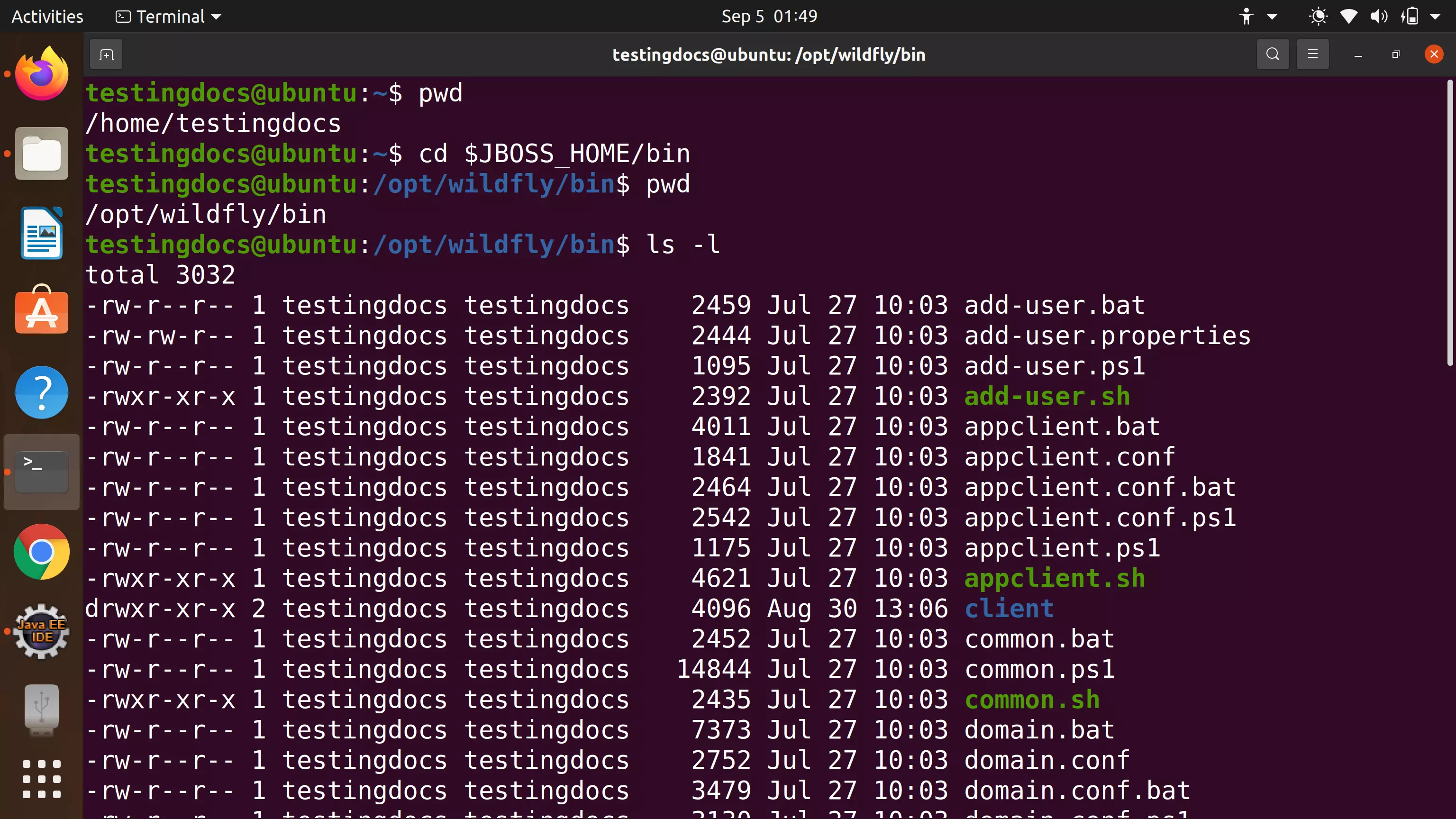Unpacking 'ls George Net Worth': Understanding The Real Value Of The Linux `ls` Command
Have you ever typed something into a search bar, perhaps a little curious about a name, and ended up on a path you did not expect? It happens, you know, sometimes a search query like "ls george net worth" pops up, and it makes you wonder what it could possibly mean. Is there a person named Ls George whose financial standing is a topic of public interest? Or, could it be something else entirely, perhaps a slight misunderstanding or a unique way of looking at something quite different? Today, we are going to clear up any confusion and talk about what this particular phrase might truly point to, especially when we consider a very important tool in the world of computers.
So, you might be thinking, what does "ls george net worth" have to do with anything practical? Well, it turns out that the first part of that query, "ls," is incredibly significant in the world of Linux and other Unix-like operating systems. It is, basically, a command that many people use every single day. This command helps users see what files and folders are around them on their computer. It is, quite simply, a fundamental piece of how these systems operate, and its importance really cannot be overstated, to be honest.
As a matter of fact, when we talk about "net worth," we usually think about money or assets belonging to a person or a company. But what if we thought about the "net worth" of a tool, like a command? What is its value, its utility, its contribution to the digital world? This article will explore the immense value and widespread use of the 'ls' command, showing why it is, in its own way, incredibly rich in functionality and utterly essential for anyone working with a Linux system. It's almost like a foundational skill, really, that everyone picks up.
- Taraswrld Onlyfans Leak The Untold Story You Need To Know,html
- Evelyn Lozada Nude The Truth Behind The Sensation,html
- Taraji Henson Nude Facts Myths And The Real Story Behind The Headlines,html
- Sunny Ray Xo Nude The Untold Story Behind The Viral Sensation,html
- Chanel West Coast Nudes A Bold Exploration Of Art Fashion And Controversy,html
Table of Contents
- What is the `ls` Command, Really?
- Why the `ls` Command is So Important
- The "Net Worth" of a Command: Its Enduring Value
- Common Questions About the `ls` Command
- Conclusion
What is the `ls` Command, Really?
The 'ls' command, at its core, is a very straightforward tool. It is used to list files and directories. When you open a terminal in Linux, for instance, and you type 'ls' and press enter, you get a list of everything in your current location. It is, you know, like looking into a folder on your desktop, but through text. This simple action is often the very first thing someone does when they get into the command prompt of Linux, which just goes to show how basic and fundamental it is.
This command does more than just show names, though. It can give you detailed information about files and directories within the file system. You can see things like when they were last changed, who owns them, and what permissions are set on them. So, it's not just a quick glance; it is a way to get a lot of useful data about your digital surroundings. The 'ls' command is, as a matter of fact, one of the most used commands in the Linux terminal to display the files and directories or path in the terminal, making it a truly essential skill for anyone working with these systems.
For decades, Linux users have been putting the 'ls' command to work. It is a basic, useful, and obvious utility that has stood the test of time. Originally, it debuted in an AT&T build of Unix, which means its roots go way back to the very beginnings of these operating systems. This long history shows just how robust and consistently helpful this command has been. It is, arguably, a classic piece of software engineering that continues to serve millions of users daily, even today.
- Graham Barham Net Worth,html
- Why Do People Separate But Never Get Divorced,html
- Chris Evan Rock Leak The Untold Story You Didnt Know About,html
- What Did Prince Philip Call Princess Anne,html
- Why Did The Steelers Trade George Pickens,html
The 'ls' command is also specified by POSIX and by the Single Unix Specification. This means it is a standard part of how Unix-like systems are supposed to work, ensuring that it behaves in a similar way across different versions of Linux or Unix. This standardization is quite important, as it helps users feel comfortable and productive no matter which system they are on. It is, basically, a universal language for seeing your files, which is pretty neat.
Why the `ls` Command is So Important
The reason the 'ls' command holds such a high "net worth" in the computing world is because of its sheer utility and versatility. It is not just a simple list maker; it is a gateway to understanding and managing your file system. Many people use it constantly, almost without thinking, because it provides immediate feedback on where you are and what is around you in the terminal. This immediate feedback is, you know, incredibly helpful for staying oriented.
While it is one of the most frequently used commands, many people do not utilize its full potential. There are many useful options and parameters for 'ls' that can greatly enhance its functionality. By learning these, you can transform a simple listing into a powerful analytical tool. This means that while its basic use is common, its advanced capabilities are where its true depth lies, giving it, frankly, a much higher value than a quick glance might suggest.
Basic Uses and Everyday Help
The most common use of 'ls' is, of course, to see what files and folders are in your current directory. If you are in a folder and you type 'ls', it just shows you the names. This is super helpful for getting your bearings. Say you just moved into a new directory and you are not sure what is inside; 'ls' gives you that immediate overview. It is, quite simply, your first step in many terminal tasks, and it makes things a lot clearer right away.
For example, if you are looking for a specific file but cannot quite remember its name, 'ls' can help you scan through the contents of a folder. You might see a pattern or a file name that jogs your memory. This kind of quick check is something people do all the time. It is, basically, a visual aid for your command-line work, which is very useful when you are trying to be efficient.
You can also use 'ls' to list the contents of another directory without having to move into it first. You just type 'ls' followed by the path to that directory. This saves time and keeps you in your current working spot while still letting you peek into other areas of your file system. This ability to look around without changing your location is, you know, a very practical feature that many users appreciate.
Getting More Information
Beyond just listing names, 'ls' has options that let you see a lot more. One of the most popular is the '-l' option, which stands for "long listing format." When you use 'ls -l', you get a whole table of details for each file and directory. This includes file permissions, the number of hard links, the owner's name, the group name, the size of the file in bytes, the date and time it was last modified, and its name. This level of detail is, honestly, incredibly valuable for system administration and for understanding what is going on with your files.
For instance, knowing who owns a file or what permissions are set on it can be really important for security or for troubleshooting problems. If you cannot access a file, a quick 'ls -l' can tell you if you have the right permissions. This kind of immediate diagnostic information is, basically, what makes 'ls' such a powerful tool. It helps you quickly identify issues without having to dig through logs or other tools, which is pretty convenient.
Other options let you sort the output in different ways, like by size ('-S') or by time modified ('-t'). You can also list hidden files, which usually start with a dot, by using the '-a' option. These options let you customize the output to fit exactly what you need to see. So, you know, it is not just a static list; it is a dynamic view of your file system that you can tailor to your specific task, which is quite helpful.
For Efficient File Management
Discovering how to use the 'ls' command in Linux is a big step for efficient file management. It is the first line of defense, so to speak, for seeing and understanding your file system. Before you move, copy, or delete anything, you usually want to see what is there. 'ls' provides that essential preview. It is, honestly, a fundamental part of any good file management routine, helping you avoid mistakes and work more quickly.
By exploring basic and advanced options, you can greatly enhance your terminal skills. For example, combining 'ls' with other commands using pipes can create incredibly powerful workflows. You might list files and then filter them based on certain criteria, or send the list to another program for further processing. This ability to combine commands is, basically, one of the great strengths of the Linux command line, and 'ls' is often the starting point for these complex operations.
Consider the task of cleaning up old files. You could use 'ls -lt' to list files by time, with the newest ones first. Then, you can easily spot older files that might be ready for archiving or deletion. This kind of practical application shows how 'ls' is not just for viewing but for actively managing your digital space. It is, in a way, like having a very organized assistant helping you keep track of your digital possessions, which is very useful.
The command is also very helpful for scripting. When you write scripts to automate tasks, you often need to get a list of files to process. 'ls' is frequently used within these scripts to gather that information. This makes it an important building block for automation, which is a key part of modern computing. It is, you know, a workhorse that quietly does its job behind the scenes, enabling more complex operations.
The "Net Worth" of a Command: Its Enduring Value
When we talk about the "net worth" of the 'ls' command, we are really talking about its lasting impact and its irreplaceable role in the computing world. Its value is not measured in dollars, but in its constant utility, its broad adoption, and its fundamental contribution to how we interact with computers. It is, basically, a tool that has paid dividends in productivity for decades, and continues to do so.
The fact that it is one of the most frequently used commands in Linux speaks volumes. It is a testament to its simple design and its effective functionality. It does one thing, and it does it exceptionally well. This focus on doing a single job perfectly is, arguably, a hallmark of good software design, and 'ls' exemplifies this principle perfectly. It is, in some respects, a model for how basic utilities should be built.
Its "net worth" also comes from its accessibility. It is easy for beginners to pick up the basics, but it also offers a depth of options for experienced users to explore. This scalability makes it valuable to everyone, from someone just starting out with Linux to seasoned system administrators. It is, you know, a tool that grows with you, which is a very good thing.
Furthermore, the 'ls' command represents a core skill for anyone who wants to feel comfortable and capable in a command-line environment. Learning it well means you have a solid foundation for managing files, understanding permissions, and even troubleshooting problems. This foundational knowledge is, quite simply, invaluable in today's tech-driven world. It is, basically, a skill that opens many doors to deeper computer understanding.
The command is also incredibly stable. It has been around for a very long time, and its core functionality has not changed dramatically. This reliability means you can always count on it to work as expected, which is a huge benefit in any computing task. It is, as a matter of fact, a rock-solid piece of software that has proven its worth over many, many years.
Consider the sheer number of times 'ls' is executed globally every day. Think of all the developers, system administrators, data scientists, and casual users who rely on it. The collective value it provides in terms of time saved, clarity offered, and tasks enabled is truly immense. It is, you know, a quiet giant in the world of commands, whose impact is felt by millions, which is pretty amazing when you think about it.
Common Questions About the `ls` Command
What is the most basic way to use the 'ls' command?
The simplest way to use 'ls' is just to type 'ls' into your terminal and press enter. This will show you a list of all the files and directories in your current location. It is, basically, like asking your computer, "What's here?" and getting a quick answer. This is often the first command new Linux users learn, you know, because it is so straightforward.
How can I see more details about files using 'ls'?
To see more details, you can use the '-l' option with 'ls'. So, you would type 'ls -l'. This provides a "long listing" format, showing permissions, ownership, file size, and the date and time of the last modification. It is, in fact, a very popular way to get a comprehensive overview of your files, which is pretty useful.
Can 'ls' show hidden files?
Yes, 'ls' can show hidden files. In Linux, hidden files usually start with a dot (.). To see them, you use the '-a' option, like this: 'ls -a'. This will list all files, including those that are normally kept out of sight. It is, honestly, a handy trick for finding configuration files or other system-related items that are typically hidden, which is very helpful.
Conclusion
So, while a search for "ls george net worth" might initially seem to point towards a person's financial standing, it actually leads us to a fascinating discussion about the immense value and enduring importance of the 'ls' command in Linux. This command is far more than just a simple utility; it is a fundamental building block for anyone working in a command-line environment, providing immediate insights and detailed information about files and directories. Its true "net worth" is found in its consistent reliability, its wide range of options, and its essential role in efficient file management for millions of users around the globe, which is really something to consider.
The 'ls' command is a prime example of how simple, well-designed tools can have a profound and lasting impact. It is a skill that helps you see what is around you in your digital space, making it easier to manage your files, understand system permissions, and work more productively. If you are looking to deepen your understanding of Linux, spending time with 'ls' and its various options is a truly worthwhile endeavor. You can learn more about basic Linux commands on our site, and for a deeper dive into file system management, check out this page about advanced terminal usage. Explore the possibilities and enhance your command-line capabilities today!



Detail Author:
- Name : Pearline Mosciski
- Username : qabernathy
- Email : jared.mraz@gmail.com
- Birthdate : 1970-10-15
- Address : 258 Mraz Pine Wildermanton, SD 78013-8204
- Phone : +1.618.295.4839
- Company : Quitzon-Murray
- Job : Drilling and Boring Machine Tool Setter
- Bio : Qui enim quaerat maiores maiores recusandae. Quod excepturi molestiae itaque a facere sit. Veritatis placeat doloremque aut dignissimos.
Socials
linkedin:
- url : https://linkedin.com/in/fausto_dev
- username : fausto_dev
- bio : Et laudantium dolor qui nobis et.
- followers : 4324
- following : 1047
facebook:
- url : https://facebook.com/feeneyf
- username : feeneyf
- bio : Cum hic sapiente voluptatum ex quam. Quia ab aut deserunt quis qui ut.
- followers : 3064
- following : 1319
tiktok:
- url : https://tiktok.com/@fausto_feeney
- username : fausto_feeney
- bio : Aliquam consequatur sed odio qui aut aut id. Non quia et optio.
- followers : 6193
- following : 2817